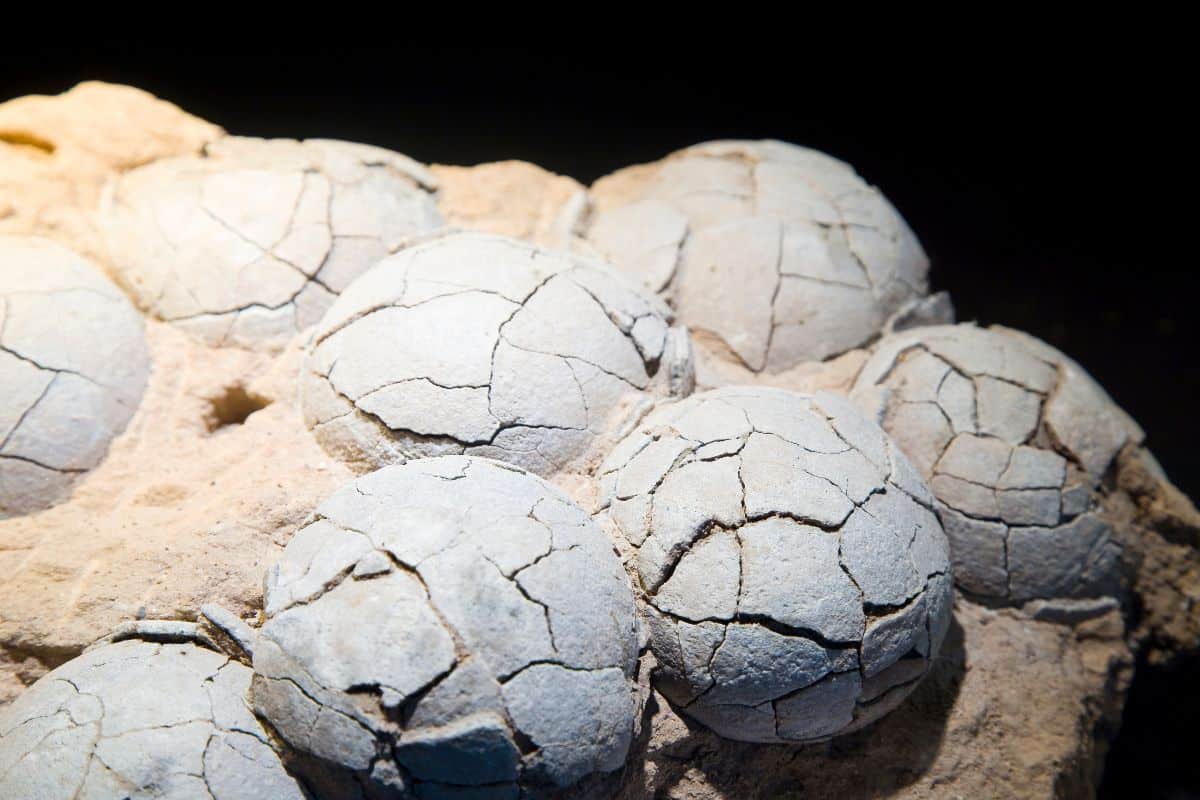Titanosaurus pleases the imagination with a maximum length of 30 meters. Thanks to the discovery of 256 dinosaur eggs, we now know a lot more about this giant beast.
In central India, 92 fossil nests filled with giant eggs, about 18 centimeters long, were found. It appears to be a Titanosaurus (literally: giant or titanic lizard), with a length of up to 30 meters and a weight of 75,000 kilograms, it may have been the largest dinosaur that ever roamed the Indian subcontinent. Despite his huge stature, he was probably a good boob. He ate only plants, but he could deliver a devastating blow with his tail or long neck if a bloodthirsty beast dared to bite him.
Prehistoric nursery
The Lamita Formation is located in the Narmada Valley in central India and is known among paleontologists for its fertile soil. Over the past 200 years, fossils of dinosaur skeletons, bones and eggs have been found, dating back to the latter part of the Cretaceous period, between 70 million and 66 million years ago, just before the dinosaurs became extinct.
But there are still some untouched prehistoric surprises awaiting scientists. No fewer than 256 titanosaur eggs emerged from the layers of the earth after careful research and gives us a fascinating insight into the living environment and living habits of these giant dinosaurs.
Shallow pits
Researchers from the University of New Delhi Analyze it The fossilized egg remains and I eventually found six different types of eggs, all of which fall under the Titanosaurus heading. This came as a surprise to the team, as they had never encountered so much diversity in skeletal remains from the environment before. The placement of dozens of nests was also exciting. Inevitably, the giant animals buried their eggs in shallow pits, just as modern crocodiles do. In addition, many abnormalities were found in the eggs. For example, they find an “egg within an egg”. This is rare and indicates that the reproductive physiology of titanosaurs was very similar to that of modern birds, which similarly produce egg after egg and lay it in the nest.
breeding colony
Many nests are found close to each other throughout the region. So the scientists concluded that titanosaurs, like 13 percent of bird species today (including many seabirds, as well as crows, ravens and swallows), bred together in a giant breeding colony. But the scanty spacing between nests left little room for the parents of the enormous dinosaur, making it very likely that the newborns would soon be abandoned by the adults.
It would be impossible to discover things like this about reproduction without such archaeological finds. Fossil nests provide a wealth of detailed information and contribute significantly to paleontologists’ understanding of how dinosaurs lived and evolved.
1000 km of white
“Our research revealed a great breeding ground for a colony of titanosaurs. We gained new insights into the nesting behavior and early life stage of the giant animals. Our work revealed many new details about the reproductive strategy of these dinosaurs just before their extinction,” says researcher Harsha Dheiman.
“Dinosaur nests in central India from Jabalpur in the east of the Narmada Valley to Balasinor in the west are now associated with new breeding grounds in the Dar district of Madhya Pradesh. Altogether, an area of 1,000 km has been established, which constitutes one of the largest dinosaur breeding grounds in the world.” . It is assumed that the researchers are far from excavation. It’s only a matter of time before new interesting details about the life of giant dinosaurs are learned.







